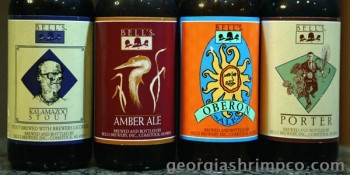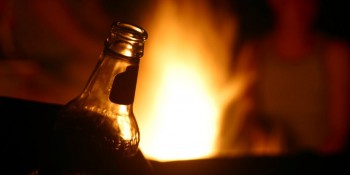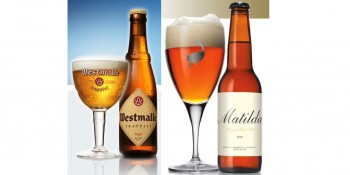There has never been a final agreement on which is better: the classic, old, tried-and-true way of doing things, or the new, improved, “groundbreaking” way. The debate unfolds in many areas of human endeavor, including in the production of wine, beer, and spirits, and there are partisans on both sides.
I guess circumstances determine a lot in the argument, though. Consider technology: Most people will go out and purchase the newest, most up-to-date techy device, sometimes dropping hundreds of dollars just to have the latest, “greatest” whatever-it-is. We assume that when a new technological marvel is invented and released, it must be an improvement over what came before, the previous glitches fixed and new applications available to us. The iPhone 6 will make prior versions obsolete, just like digital media has done to most vinyl records, eight-track tapes, audio and video cassettes, CDs, DVDs, and more.
But it’s not like that with everything. Remember New Coke? When Coca-Cola tinkered with the formula of its flagship soft drink in the 1980s, the backlash was swift and overwhelming: Coca-Cola “Classic” was on the shelves within three months, and New Coke was nothing more than a case study in marketing textbooks by the 1990s.
So, which argument prevails in the brewing of beer?
Beer is an ancient but constantly evolving beverage that has craft-brewing practitioners biting at the bit to branch out and risk it all to make something new and never-tasted. Take, for example, Rogue Voodoo Doughnut Bacon Maple Ale — surely and truly a challenge to the palate of even the most skilled beer drinker. And I’m still not sure about trying Belgium’s Smisje Wostyntje Mustard Ale. It seems that the reigns have been loosened quite a bit in the new craft beer renaissance; brewers with eccentric vision are pursuing what would have once been illegal.
All these innovations are exciting and, in many cases, a novelty. I appreciate what the craft beer movement is doing, while I maintain a certain respect for brewers who have taken to focusing their beer-crafting skills on taking a tried-and-true style of brew that is already near perfection and attempting to reproduce it with the highest quality of care and diligence.
I recently was able to get my hands on a large bottle of a 2012 vintage Goose Island Brewing Company Matilda, a Belgian-style, golden tripel ale. I thought it would be interesting to drink it side-by-side with a proven and respected Belgian Trappist tripel ale, such as the Westmalle Tripel. I wanted to compare the Old-World recipe with a New-World interpretation. It turned out to be a gratifying experience.
First, a little about each beer:
Representing the Old World, Westmalle Tripel is not only a conventional Belgian-style ale, but it is one brewed in the proud tradition of the Trappist monks at Westmalle Abbey, who oversee every aspect of its production, from picking the choicest hops, yeast, and malt, to the brewing, bottling, and sale of the product. Trappist beers are revered the world over because of their intensity and the attention to detail given to flavor, carbonation, and overall quality craftsmanship. Westmalle is no exception.
According to the historical records of the abbey, monks at Westmalle started brewing beer for their own use back in 1836, but this recipe was first brewed and served in 1934. The current formula has been unchanged for close to 60 years. This beer is nicknamed the “mother of all tripels” by the monks who brew it with simplicity in mind. At 9.5 percent alcohol by volume (ABV), this strong, top-fermentation, classic blonde beer consists of only five ingredients: water, malt, sugar, yeast, and hops. The exact ratio of these ingredients in the formula is kept under tight wraps by the monks. Only the handful of monks that actually work in the brewery know the exact mixture.
Representing the New World is Goose Island Brewing Company, a prominent, Chicago-based craft brewery that thrived during the 1990s and 2000s. Goose Island was recently purchased by Anheuser-Busch InBev, allowing the company to really expand its product availability in recent years. Their Matilda beer, at 7 percent ABV and between 26 to 32 International Bitterness Units (IBU), is a multi-award-winning, Belgian-style tripel ale.
Goose Island recommends aging the beer and says it can continue, under the right conditions, to develop in the bottle for up to five years. Its wild spice and fruit accents make it a unique beer. Matilda has been brewed since the early 2000s but was, until around 2010, not available in wide release. Beer critics on Beer Advocate liken it to popular Belgian strong ales such as La Chouffe.
For the tasting of these beers, I tried them one after the other. I drank the Westmalle first, because it was a beer I have had in the past and was more familiar with; the Matilda was a new beer to me. Both beers were drunk from a Trappist-style chalice glass.
My tasting notes
Westmalle Tripel (2014 bottling): On the pour, golden, but cloudy and yeasty in color with a foamy head (a slow, angled pour is recommended). Great effervescence and a wafting, subtle aroma of hops, dried fruit, and nutmeg. The first sip can be a shock if you’ve never had a strong Belgian ale before. (I liken it to someone who tries a Delirium Tremens or Duvel for the first time and realizes that, while it may have the color of Budweiser, it is most definitely not Budweiser; it is much more powerful.) But it smooths out quickly, and you are left with a satisfying, refreshing drink. The hops are strong, but not I.P.A. strong; they sit on the tongue just long enough to be noticed. It has a classic finish and a lasting aftertaste. Rating: A
Goose Island Matilda (2012 bottling): On the pour, slightly darker golden/amber color than Westmalle, but far less opaque; noticeably less unfiltered yeast present in the bottle. On the nose, it was quite different. This beer reminds me of autumn: heavy on spiced nutmeg, ginger, and clove — maybe even some cinnamon in there. Even before I tasted it, I had the impression of much more complexity. The hops level is similar to or slightly less than the Westmalle, but the combination of spice and nuttiness was much more prevalent. There was a sweetness factor that had not registered with the first beer, too. (My theory is that this beer has less yeast and, therefore, less of the sugar was broken down and turned to alcohol — but I have no evidence to back that up.) Where this beer seemed to yield more on the side of complex and intense flavors, I feel the spiciness of it made it less refreshing, overall. The beer is already two years old but, based on its intensity, I feel it could probably withstand another year or two of bottle aging and still be enjoyable. Rating: A-


